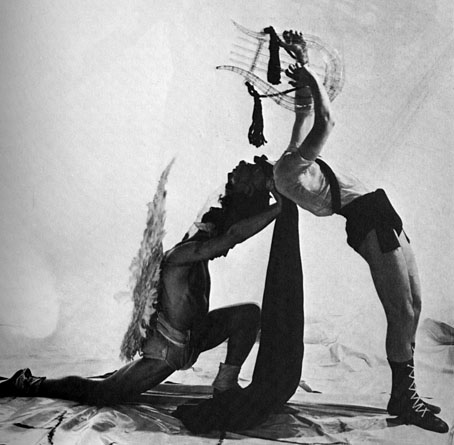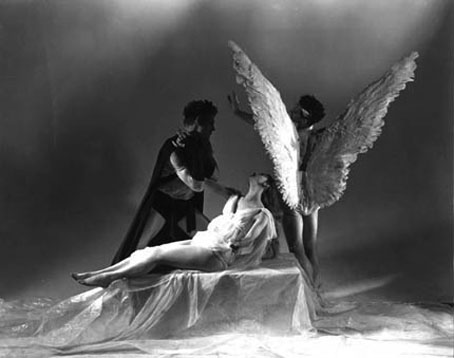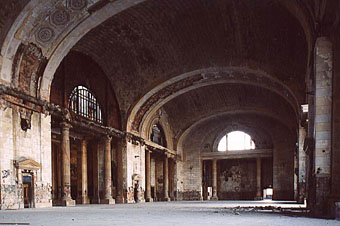The Flandrin pose again, this time in a photograph by George Platt Lynes (1907–1955). This is from a Flickr set of Lynes’ work which was a nice find since many of the web collections are small and tend to repeat the same material.

The picture above isn’t from the Flickr set, it’s a scan from Philip Core’s essential Camp: The Lie that Tells the Truth (1984), and a photograph that long fascinated me for completely unwholesome and inartistic reasons. Core credits it only as depicting dancers from Balanchine’s Icarus but I’d suspected for some time it was a Lynes picture, Lynes having photographed Balanchine’s dancers on several occasions, notably in some nude stagings of Orpheus. The Flickr picture below confirms the Lynes origin although it adds a new layer of mystery by crediting it to Balanchine’s Die Fledermaus. Given the very Classical look of the dancers’ costumes I suspect Core has the correct attribution but the confusion is also an excuse to keep searching.
Elsewhere on { feuilleton }
• The recurrent pose archive
Previously on { feuilleton }
• Philip Core and George Quaintance
• George Platt Lynes






